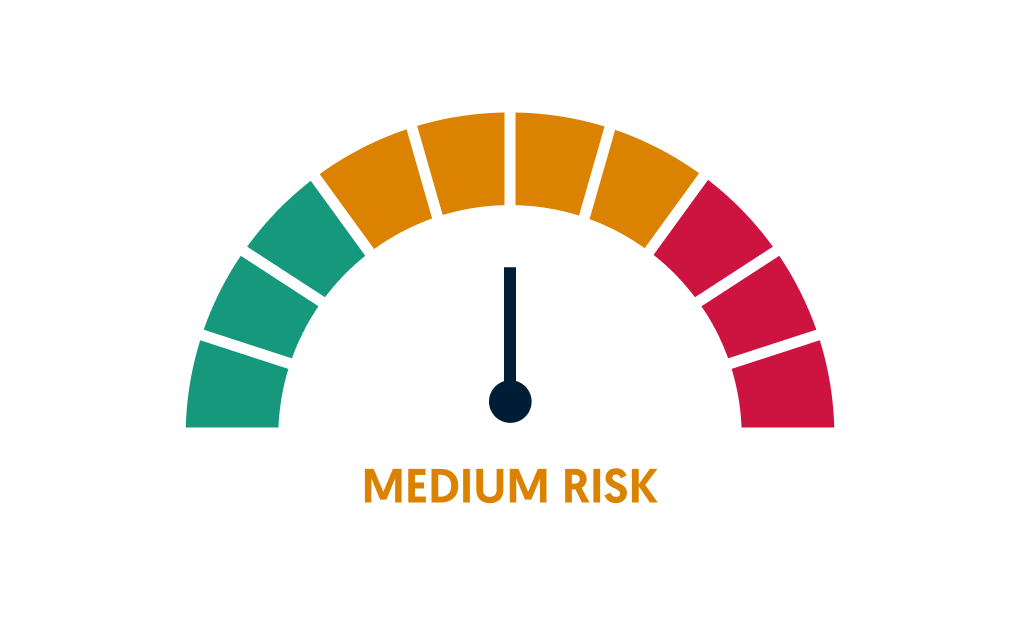Loan Agreement
This Loan Agreement can be used by lender when offering a loan to a Borrower.
4.6 (381 reviews)
Last updated January 22, 2025
Under 5 minutes
Suitable for Australia
Written by Edwin Montoya Zorrilla
Reviewed by Damin Murdock
Document Overview
Whenever you are loaning a significant amount of money, it’s a great idea to put it in writing. A Loan Agreement is essential if you’re loaning to someone you are not familiar with, as it can prevent misunderstandings and disagreements by clearly setting down the terms of the loan and requires the borrower to repay the loan. Having the details of the sum, the interest, and other important provisions in a Loan Agreement ensures that everyone complies with their obligations.
IMPORTANT: We highly recommend you speak to a tax accountant about the tax implications of providing a loan, especially where the interest rate is set at 0%.
The Legal Risk Score of a Loan Agreement Template
Our legal team have marked this document as medium risk considering:
- There is a risk that the loanee may have to comply with regulatory obligations in making loans as part of its business.
- The document allows the lender to demand immediate repayment of all monies following an event of default without prior notice, which could place significant financial pressure on the borrower unexpectedly.
- The agreement grants the lender extensive control and discretion over the enforcement of terms, which may result in a lack of predictability and increased uncertainty for the borrower regarding the lender's actions.
Users familiar with legal and financial obligations may find this agreement manageable, but it is crucial for any party entering into this agreement to understand the long-term implications and the lender's significant discretionary powers.

Loan Agreement Checklist
Complete your free Loan Agreement with our checklist
Ongoing Monitoring
Regularly review the agreement to ensure all parties meet their obligations, especially regarding payments and the provision of any necessary further assurances as stated in clause 20.
What does the Loan Agreement cover?
- Repayments of the loan amount;
- Interest;
- Fees and charges;
- Acceleration;
- Indemnity;
- Security
- Enforcement expenses if the borrower defaults on the loan;
- Waivers; and
- The relevant information statement and other statutory notices.
Other names for Loan Agreement include:
- Loan Contract; and
- Money Lending Agreement.
What is the difference between a Loan Agreement and a Promissory Note?
A Loan Agreement is a document where a lender advances funds to a borrower. The agreement is subject to the borrower’s obligation to repay that money, whether it be in a certain time or in a certain way. A Loan Agreement protects both parties interests through enforcing the contract. A Promissory Note sets out the terms under which one party agrees to pay a set monetary amount to another party. This agreement generally is made in writing and the payment can be required on the spot or at a future date. The difference between the two is that a promissory note is a simple document that is not as complex as a Loan Agreement, and may be shorter and less detailed. On top of this, a Loan Agreement enforces obligations between the signing parties, whereas as promissory note is more of a statement of the loan and a method of tracking loan repayment.
What is a Division 7A Loan Agreement?
A Div7a Loan Agreement is used when companies give loans. It covers certain loans that are made by a private company to people within the company, as well as people who seek loans through a company.
What is a Drawdown Loan Agreement?
A Drawdown Loan Agreement happens when the loan is taken up by the borrower.
Is it common for interest to be charged on a personal loan?
Yes, it is common for interest to be charged on a personal loan. Most personal loans charge interest when repaying the debt. Interest is charged for numerous reasons; the largest two aspects being to profit from the risk that the entity giving the loan takes, and to adjust to the changing value of money and inflation within the economy.
Can you still get a loan with bad credit?
Yes, you can still get a loan with bad credit. However, it may be the case that the interest payments and the ramifications of a breach within the agreement are exponentially increased. You could also apply for a loan with a creditor who does not use credit scoring, they are hard to find but can help if you are in a situation where you have bad credit. You could also demonstrate that you have taken measures to improve your credit score; whether it is by showing you have a secure job or paid back the loans that have held your credit score down in the past. Such steps like these will help you towards receiving a home loan with a bad credit score.
What is the typical payment schedule included in a Loan Agreement?
The typical payment schedule included in a Loan Agreement is typically monthly. Most loans are paid off in monthly sums, however, there can be arrangements made to extend the period between payments if you get the right approval.
What is a guarantor clause?
A guarantor clause is a clause within the loan which covers certain instances where the payee might not be able to pay back the loan. A guarantor will take on the responsibility of paying back the loan if the payee is not able to for whatever reason it may be. A guarantor clause is used as another form of security for the bank, as well as reason for the bank to approve your loan.
What are the consequences of not paying a loan on time?
If you fail to pay your loan on time, there can be severe consequences. At first, the repayments will slowly increase until the borrower has caught up with your repayments. If the borrower is unsuccessful in repaying the payments they are behind in, the lender may send a letter demanding the payment. If the demands are not met, the loan can be further escalated and/or defaulted. Defaulting can lead to the inability to secure a loan for years. If the borrower is still unable to repay the debts, court action can be enforced.
Other documents you may need:
Further information
View Sample Loan Agreement
It's never been so easy
Sign-up to a free Lawpath account
Get started and we'll take care of you. It's that easy.
Browse our 500+ legal documents
Browse our 500+ legal documents to find the perfect match to cover your business needs. We've got Compliance, Employment, Service agreements and more.
Collaborate with e-Sign and Sharing
Having access to your legal documents has never been easier. You can request e-signature, share the document and download for an efficient collaboration.
Create unlimited legal documents and eSignatures for only $39/month.
Upgrade to a Lawpath legal plan to boost your new business.


Here's what people say about Lawpath's Loan Agreement
Reviews are managed by BazaarVoice and comply with the BazaarVoice Authenticity Policy. Reviews are independently verified by BazaarVoice and detail our customers' real experiences.
0 reviews
Most Recent
Highest to Lowest Rating
Lowest to Highest Rating

